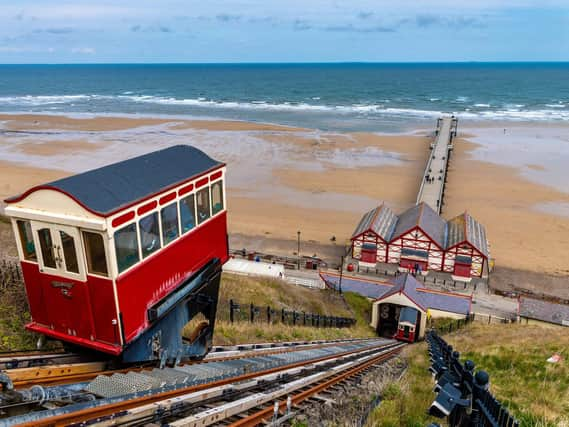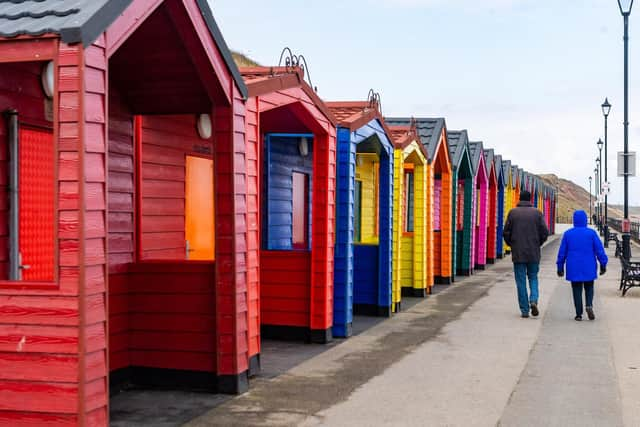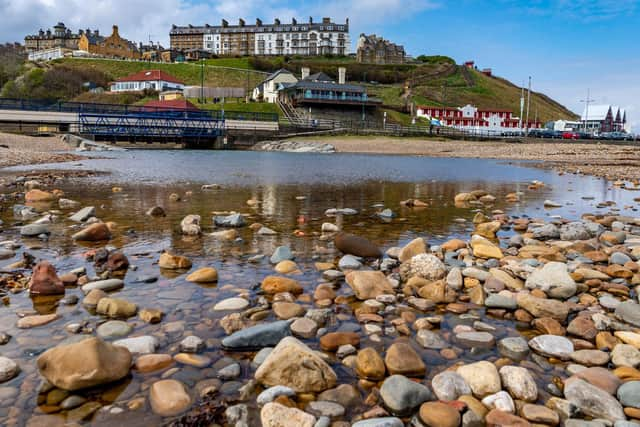Why Saltburn's heady Victorian charm keeps tourists and surfers coming


October 2, 1861, is an important date in the story of Saltburn-by-the-Sea for it was about to be put on the map as a resort for the discerning and the wealthy. For this was the day people arrived to watch the Right Hon Earl of Zetland lay the foundation stone of the hotel that would bear his name. It was a sign of a seaside town on the up as it began to shed the reputation it had borne for many years as a haven for smuggling and evading the revenue men of the North Yorkshire coast.
Owing to its isolated location, Saltburn had long been doing pretty much what it liked. It may have been part of the Zetland estates, but the effort in getting to the community was considerable. For centuries it was little more than a hamlet with a few fishermen’s cottages and a pub called (what else?) the Ship Inn.
Advertisement
Hide AdAdvertisement
Hide AdYou had to want, or need, to go there. And there were very few who did. The land around the settlement was rich in minerals, particularly iron, but in the 1800s, there were considerable developments, in both mining and other extractions, and then with the arrival of the railways came an industrial boom.


In the centre of all this were the Pease family, who were industrialists, strong in local politics, and Quakers. One of their number was Henry Pease, who had shrewdly invested in the Stockton and Darlington Railway, as well as a number of other thriving enterprises. Henry was walking along the coastline one day when he had something akin to a vision. He claimed to have seen a town “arising on the cliff”, and the “quiet, unfrequented and sheltered glen turned into a lovely garden”. When he told his family about this experience they agreed that he might have had a rather good idea, and they put their weight behind his proposals.
The result wasn’t Peasetown, as it might well have been, for the creator of Saltburn-by-the Sea had a profound belief in his own importance – he had arranged personal meetings with the Czar of Russia and then Napoleon III to discuss an end to the Crimean War, and was for many years an MP.
Instead, up went several streets, on land purchased from the Earl, and then the Zetland Hotel itself, which was considered to be the epitome of modernity and luxury. It had 120 bedrooms and a spur line from the new Saltburn station went to the rear of the premises, where guests had their own platform underneath a glass portico. Today, it is an apartment development.
Advertisement
Hide AdAdvertisement
Hide AdWherever possible, houses in Saltburn were given a sea view, and the best places to live were in the “Jewel” thoroughfares – Ruby, Emerald, Pearl, Amber, Diamond, Coral and Garnet.


The names were also part of the overall Pease plan, which was given the rather prosaic and straightforward name of the Saltburn Improvement Company. This firm sold plots to investors and developers, who then built the houses – and the bricks used? They were made at the Pease brickworks, in Darlington. He was a canny businessman was Henry and, because he was a Quaker, and because he didn't drink, for many years there were no individual pubs or bars.
We can only wonder what he would have made of the angulated, but rather fun, statue to his memory which stands on Marine Parade. It is the work of Doncaster sculptor Hilary Cartmel and Michael Johnson and at the base, part of the inscription reads: “A man of energy and imagination [who] realized a vision and built Saltburn”.
Surfers love this stretch of the Yorkshire coast, and when the tide (and the sun) are out, the award-winning sands have long been a popular place for picnics and beach activities.
Advertisement
Hide AdAdvertisement
Hide AdHowever, it hasn’t always been quite so leisurely – John Hall-Stephenson told everyone that his sole aim in life was to amuse himself. But this wealthy landowner with an aristocratic background didn’t do it quietly. Apart from writing risqué poetry and prose, and also getting under the skin of leading politicians of his day, he was also obsessed with speed, and in 1767 he was to be found drunkenly racing chariots up and down the foreshore. His companion was the author Laurence Sterne and because of their social standing they got away with such antics.
It was here a century and a half later in 1922, when Sir Malcolm Campbell joined the members of the Yorkshire Automobile Club’s meeting. He was in a borrowed Sunbeam car and achieved a world record when it hurtled along the beach at an astounding 138.08 mph. Or at least it would have been a world record, had it been upheld by motor-racing’s adjudication body, the Commission Sportive, which claimed that using synchronized stopwatches ruled it invalid. The petrol fumes were blue that day – and so (very probably) was Sir Malcolm’s language.
The pleasures of the Yorkshire coast were discovered by the masses when the railways arrived, and day trippers came in their thousands. They would no doubt have been impressed by the three-arched brick station building.
The engineer was John Anderson, another entrepreneurial soul who thought that Saltburn should have a pier. The iron came from the nearby Ormesby Foundry, and it finally opened in May 1869. What made it all the more popular was that it had a landing stage for excursion steamers, and in its first six months, more than 50,000 folk had paid their cash and taken a stroll out over the North Sea.
Advertisement
Hide AdAdvertisement
Hide AdThat the pier still stands to this day is something of a wonder, since, over the decades it has been hit by storms and various vessels, and even survived a plan by the local council to have it demolished. It is almost 700 feet long, completely refurbished, illuminated at night, and was named the UK’s Pier of the Year in 2009.
For many, access to the pier will be by the cliff tramway, another remarkable example of Victorian invention, since it is one of only a few surviving water-powered funiculars in the world, and the oldest in Britain. It opened in 1884 as a welcome replacement for a scary vertical cliff hoist, and it is still going strong, with a complete restoration only three years ago. Visitors love it, because it is a direct link (120 feet in all) from the town to the seafront, and rather less effort than walking down the steep incline – or back up. But they would be unwise to miss the greenery and colourful planting in the valley and Italian gardens.
The Cleveland Way runs through Saltburn-by-the-Sea, so it is a much-loved point for walkers and cyclists. While it is the epitome of an unspoiled Victorian destination – with its venerable buildings and sweeping sands – Saltburn has avoided falling into that beige vagueness that has befallen some other seaside towns.
It remains a resort for today with much charm. Henry Pease could, you feel, be allowed to be pretty pleased with himself.